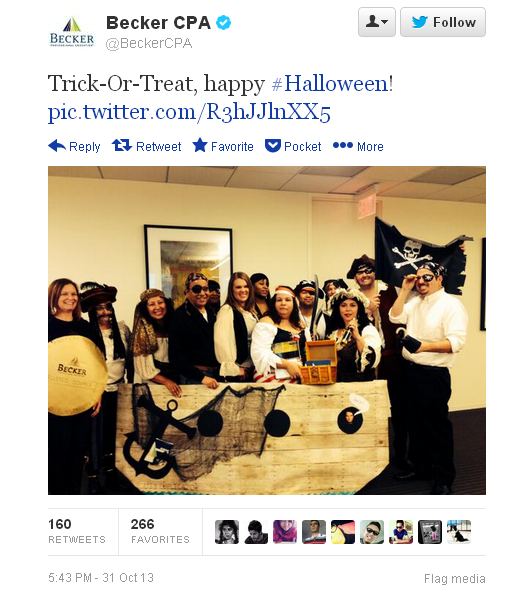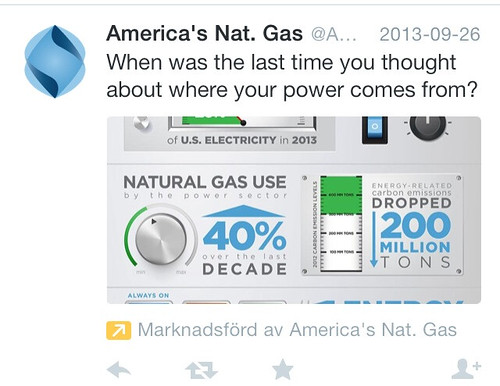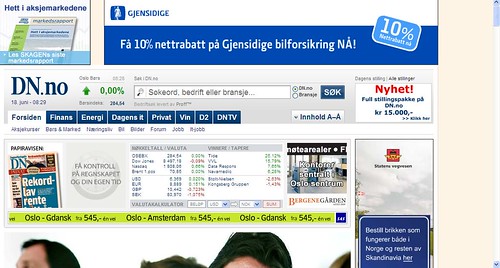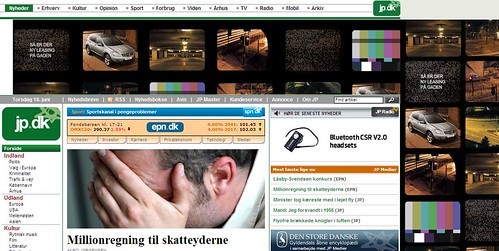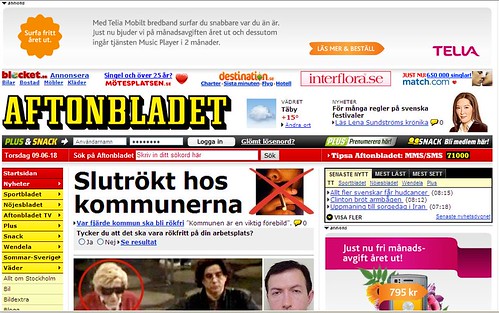RSS is one of the cornerstones in the social media revolution. Through RSS, content of all kinds is distributed across the web and we are still only using a fraction of the possibilities RSS brings us. So when Media Culpa got the chance to interview Bill Flitter, CEO of Pheedo on advertising in RSS feeds, I naturally seized the opportunity. And in the spirit of distributed journalism, I crowdsourced the questions to my Jaiku friends who added their thoughts in this thread. Here are some great insights that came out of the email interview.
Media Culpa asks: Ads in general are more and more considered a form of interruption marketing. How are readers responding to ads in RSS feeds?
Bill Flitter: Most ads are considered an interruption because they go against the grain of the media that they are in. What is supposed to happen is the ads are supposed to grab our attention because they blink, flash, animate. They sit over on the fringes of website and we become blind to them. 60% of ads go unnoticed because they are badly positioned on a web page.
Ad is considered an ad when it something you are not interested in. An ad magically transforms into something useful when it is relevant to me and instead of being an ad it becomes content.
Pheedo is working on a concept specific to distributed media called Brandstreaming. Creating a dialogue is the way to monetize social media, getting your branded content into the conversation with permission – this is the concept of Brandstreaming. Marketers cannot expect users to come to them any longer. In Web 1.0 we built micro-sites and expect everyone to come to us. The distributed Web is the new micro-site where the sum of all of the (distributed) parts is greater than the micro-site. We need to go to our customers with a consistent brand message on their terms and they need to Invite you in and join their conversation.
MC: Being in a social media environment, how should advertisers create RSS ads that encourage conversation, not just “sell a product”?
BF: I always tell our advertiser customer in social media you must tell not sell. An marketer must create compelling content to encourage engagement with their customers and prospects. Their ads must form to the media that they are in. Marketers need a content plan to be successful in social media. Ads need to take on characteristics of the medium. For example, add sharing or even commenting functionality to the ad.
MC: For most bloggers, publishing RSS ads never results in a payment. What’s in it for bloggers further down the long tail?
BF: Today, CPM and CPC is the most widely used and accepted pricing model by advertisers and their ad agencies. Without scale, these pricing models do not net a blogger much revenue. If you are writing a blog on a specific niche, your chances increase to secure a sponsor IF you know exactly who your blog audience is. Firms like Federated Media and BlogAds understand this and are getting closer to cracking the nut. What is a blogger to do? Find out exactly who your readers are and find an angle that you can sell. You have to sell who reads your blog because you are not going to impress many advertisers with how many read your blog – generally speaking.
MC: In Sweden we see that younger women dominate the blogosphere, but they don’t use RSS readers (58.7% of male bloggers do, compared to 17.8% of female bloggers according to the BlogSweden 3 survey). Do you see this trend in the US and if so, how can blog advertising reach women if they don’t use RSS, apart from banner ads?
BF: RSS readers in the US are mainly males (70%/30%). This will change over time. We have done very successful campaigns reaching women RSS readers. The same principle apply. Find out where they are congregating. For example, Dooce and The Food Section of a high concentration of women.
Others ask (my translation of questions):
Deeped asks: Your five best tips for RSS advertising (for advertisers and/or publishers).
BF: Advertisers:
1. Tell not sell
2. Content is the supreme king. Create content ads
3. Consistency of content
creation is key. RSS users are active!
4. Be in it for the long haul. Need to stop thinking about “campaigns” that have a shelf life. Digital dialogue never dies unlike a print piece that fossilizes.
5. It’s about the people not the pages. Cannot expect consumers to come to you. Need to go to them with a consistent brand message on their terms.
MattiasSwenson asks: What is your opinion on RSS readers such as the Swedish Bloggkoll.se which does not show full feeds and no ads.
BF: Question is, what type of RSS readers do users prefer? Do users want full-content? In a distributed media world, we need to be aware of all reader display types and how to monetize content for publishers. Unlike websites where we have standard sizes, out of distributed media will grow new standard sizes.
Agaton asks: On innovation in RSS advertising – where is it? What happens in that area? Where are the new ad formats that actually work?
BF: Right now, most RSS feeds have no social components. I see a feature where RSS feeds become more social and a social network onto themselves. This means the advertisements will need to be more social. Secondly, ROI measurement is evolving for both publishers and advertisers. Once there are an accepting/standard metrics, publishers and advertisers will see the value – which by the way is very soon.
Agaton asks: Why should you advertise in RSS feeds? Any concrete arguments like higher conversion rate, lower cpm or such? Or is the only real argument that it is an advertising channel on the rise that has been untapped so far.
BF: Content has left the site. Some of our advertisers tell us they know 30%+ of their customers are NOT going to websites. For many of the large media sites, their RSS traffic is exceeding or will exceed their website traffic by the end of the year. For some this is a reality they are not prepared for. Where the users are the advertising will follow. In 2009 we will see the attention on distributed media explode. We will put our focus on optimizing our content in distributed media as we did for search.
Agaton asks: Is blog advertising still an immature market?
BF: There was a lot of attention on blog advertising in 2006/07. What most dvertisers were doing is putting ads on blogs. How is that different than putting on ad on a traditional website? It was not. It lost some sizzle. ROI is ROI no matter where the ad is placed. However, a few smart marketers are figuring out how to leverage the true power of blogs – again, I point to Federated Media or BlogAds. There accomplishments will advance blog advertising and make it a necessity of every media buy. It is one spoke in a campaign.
Depeed asks: What is your opinion on the possibility to create automated contextual ads for individual blog posts? Do they already exist?
BF: A few companies are experimenting with this – Kontera and BuzzLogic. Results are to be determined. It comes down to relevancy. For a blogger to make money at this, they need a decent amount of traffic which is relative to each blogger.
Newsdesk asks: Are contextual ads based on content in one blog post, in several posts or are there other factors at play?
BF: Could be at the individual post level or the entire blog. If you are have a niche blog that only talks about iPhones for example, you most likely will see more revenue vs. a blog where the content is all over the place.
Bison asks: What do we have to do to missionize the possibilities with RSS? Why has RSS not reached high penetration in broader audiences?
BF: Today, we are in the third phase of RSS. Phase One 2005/06 Publishers asked, “Should I put RSS on my site?” Clearly the answer is yes. Phase Two 2006/07 Publishers asked, “How much traffic do I have and how are subscribers interacting with it?” Feedburner did a great job of addressing this market. Phase Three 2007/08, Publishers are now saying, “Wow, I have a lot of traffic, how do I monetize it.” Pheedo is addressing this today. Give feed monetizing time evolve. It has to happen for no other reason than the sheer amount of traffic feeds are generating.
oahnve asks: If we assume that RSS will reach an audience outside the early adopters, what will be the killer app for RSS and when will we see it?
BF: According to Forrester, 43% of internet users are ACTIVELY using RSS if they know it or not. This is up from 6% in 2005. That is tremendous growth. Why the growth? We live in a World where the consumer rules. They want their content where, when and how they want. The tools are getting easier to use, from Google Reader to Widgets to Facebook, the idea of consuming “news feeds” is becoming ubiquitous. Facebook has helped mature the idea with their news feed concept.
Tags: rss advertising, pheedo, rss, rss, reklam, annonser. Ping.

